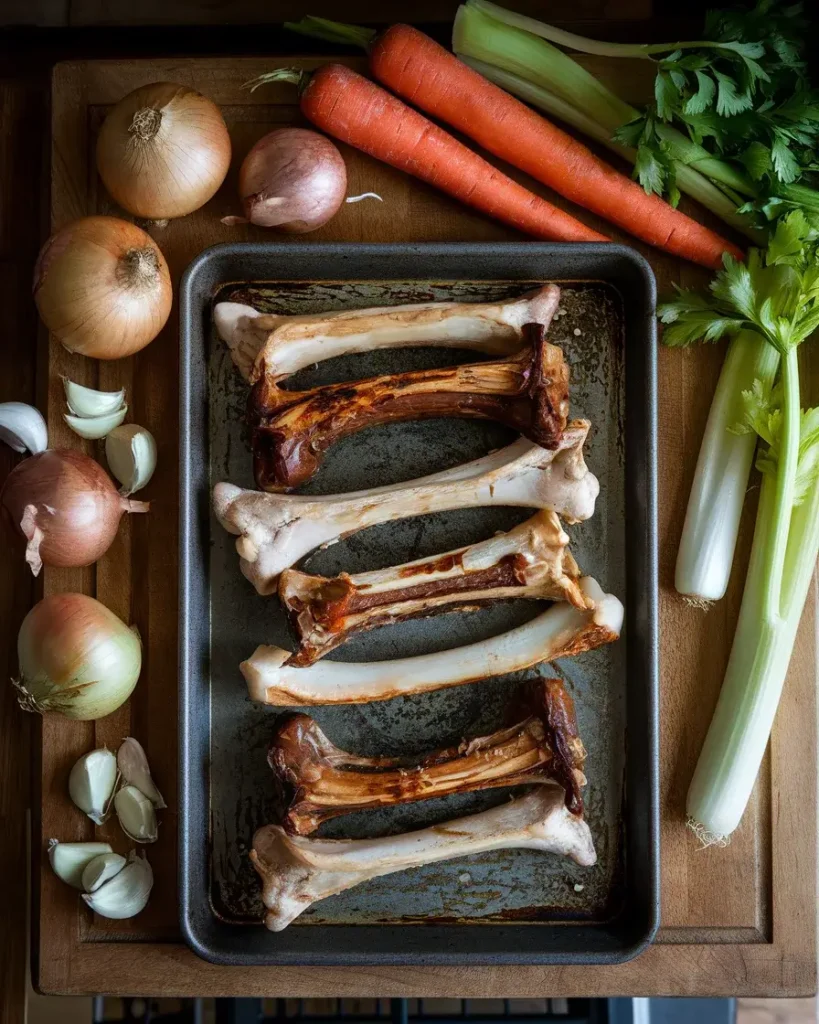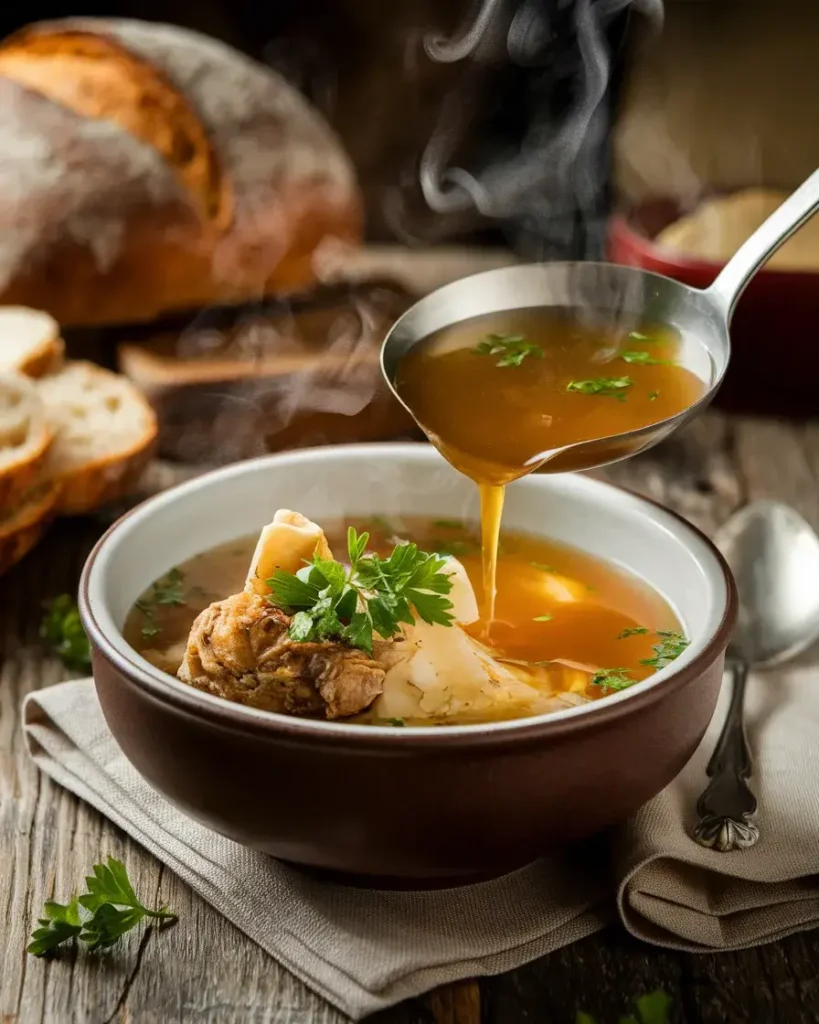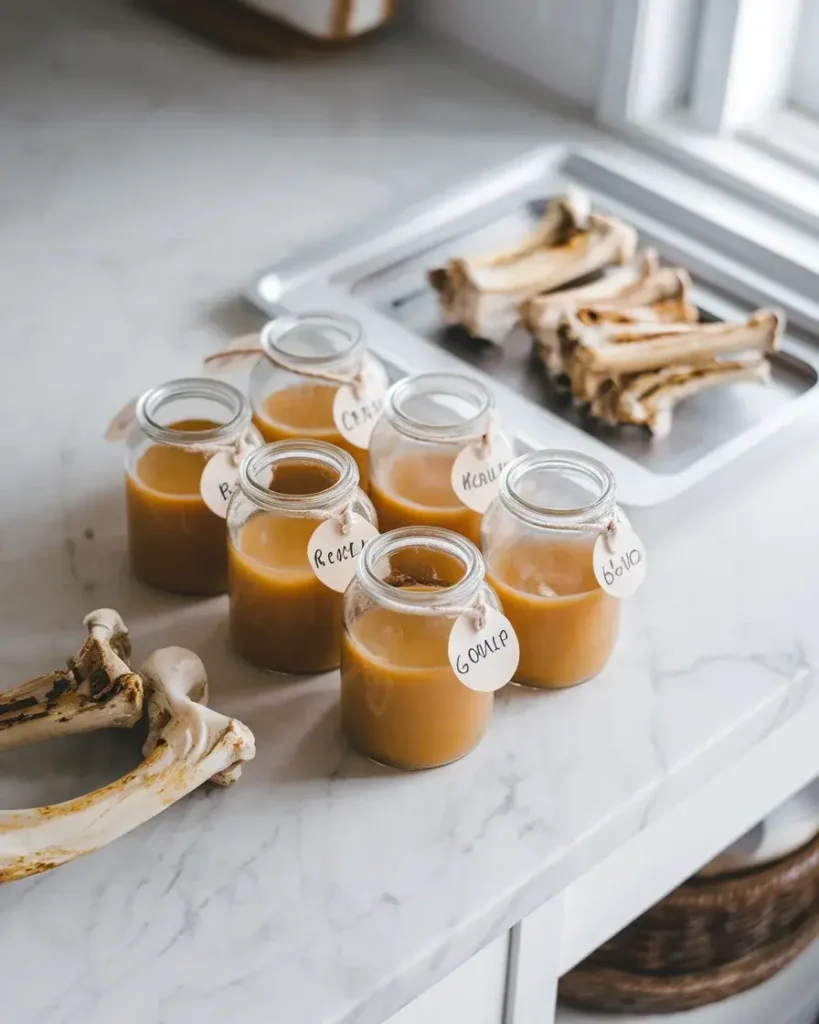Introduction
Soup bones have been a cornerstone of cooking for centuries, offering a simple yet powerful way to create flavorful, nutrient-packed dishes. Whether you’re making a classic broth or crafting hearty stews, soup bones bring depth and richness to your meals. This guide dives into everything you need to know about soup bones—what they are, their benefits, how to prepare them, and the many creative ways to use them in your kitchen. So, grab your apron and let’s get started!
What Are Soup Bones?
Definition and Types of Soup Bones
Soup bones are the unsung heroes of cooking, often overlooked but incredibly versatile. These bones, commonly sourced from beef, pork, chicken, or fish, are typically packed with marrow, connective tissue, and bits of meat. When simmered slowly, they release a wealth of flavors and nutrients, transforming a simple pot of water into a collagen-rich broth.
Beef soup bones, such as knuckles, femurs, and oxtails, are the most popular choice for broths due to their high marrow content. Chicken soup, often from leftover carcasses or wings, create a lighter broth with a delicate flavor. Fish bones, on the other hand, are perfect for quick-cooking soups like bouillabaisse, adding a touch of the sea to your dish.
Why Soup Bones Are Popular in Cooking
The allure of soup bones lies in their ability to stretch ingredients while packing a nutritional punch. Families around the world have used bones as a frugal and flavorful way to nourish their loved ones. From French bouillon to Asian bone broths, soup bones have become a global staple for good reason.
Moreover, they’re an economical option for home cooks. Bones, often considered a byproduct of meat production, are budget-friendly yet capable of creating restaurant-quality results. It’s no wonder that soup have remained a timeless kitchen essential.
How to Prepare Soup Bones

Choosing and Preparing Soup Bones
The first step in creating a delicious and nutritious broth is selecting the right soup bones. When shopping, look for bones that are fresh and rich in marrow, like knuckles, femurs, or shank bones. Marrow bones contribute to a full-bodied broth, while bones with connective tissue provide plenty of collagen. For those who prefer chicken or fish-based broths, leftover carcasses or fish heads work beautifully.
Once you’ve got your bones, it’s important to prepare them properly. Start by rinsing the bones under cold water to remove any residual blood or impurities. For beef or pork bones, blanching them in boiling water for a few minutes can also help get rid of any foam or scum that might affect the broth’s clarity.
Cooking Techniques for Soup Bones
Making a great broth isn’t complicated, but it does require patience. The slow simmering method is the most popular way to coax every bit of flavor and nutrition out of soup bones. Here’s how to do it:
- Roast for Rich Flavor: Roasting bones in a 400°F oven for 30-40 minutes enhances their flavor by caramelizing the surface. This step is a game-changer for creating a deep, complex broth.
- Add Aromatics: Place the roasted bones in a large pot with aromatics like onions, carrots, celery, garlic, and herbs. Bay leaves and thyme are classics, but don’t hesitate to toss in a few peppercorns for spice.
- Simmer Low and Slow: Cover the bones with water and bring the pot to a gentle boil. Immediately reduce the heat and let it simmer for 8-12 hours for beef bones or 4-6 hours for chicken bones. The longer you cook, the more nutrients and flavors are extracted.
Tips for Clear and Flavorful Broth
To make your broth crystal clear, avoid boiling it vigorously. A gentle simmer prevents fat and impurities from emulsifying into the liquid. Also, skimming off the foam that rises to the top ensures a clean and polished finish. For an extra nutrient boost, add a splash of apple cider vinegar, which helps draw minerals out of the bones.
Recipes Using Soup Bones

Classic Bone Broth Recipe
One of the simplest and most satisfying ways to use soup bones is to make a classic bone broth. This timeless recipe requires just a handful of ingredients, a little patience, and a lot of love. Here’s how you can get started:
- Ingredients You’ll Need:
- 2-3 pounds of soup bones (beef, chicken, or pork).
- Aromatics: 1 onion, 2 carrots, 2 celery stalks.
- Herbs: a bay leaf, a few sprigs of thyme, and parsley.
- A splash of apple cider vinegar.
- Steps to Follow:
- Begin by roasting the bones at 400°F for 30 minutes to deepen the flavor.
- Transfer the bones to a pot, add water to cover, and toss in your vegetables and herbs.
- Add the vinegar to help extract minerals, then bring everything to a gentle boil.
- Reduce the heat and let it simmer for 8-12 hours, skimming any foam that rises.
- Strain the broth and store it in jars for later use.
This broth can be sipped as-is or used as a base for soups and sauces.
Creative Soup and Stew Ideas
Once you’ve mastered the broth, you can branch out into a variety of soups and stews. For example:
- Vegetable Soup with Beef Bones: Add seasonal veggies, lentils, or beans to your broth for a hearty, satisfying meal.
- Asian-Inspired Ramen: Use soup bones to create a rich pork or chicken broth, then add noodles, soft-boiled eggs, and your favorite toppings.
- French Onion Soup: Pair your broth with caramelized onions and a crusty bread topping for a touch of French flair.
For more ideas, consider checking out the Leftover Rotisserie Chicken Recipes on Flavor Festivity, which pair wonderfully with homemade broths.
Storing and Reusing Soup Bones

How to Store Cooked and Unused Bones
Proper storage is key to making the most of your soup bones. After cooking, allow the bones to cool completely before transferring them to an airtight container. Bones can be refrigerated for up to a week or frozen for several months without losing their flavor. If freezing, consider separating the broth and bones into portions for easy access.
Unused raw bones should also be stored carefully. Wrap them tightly in plastic or store them in freezer-safe bags to prevent freezer burn. This ensures they stay fresh until you’re ready to cook.
Reusing Soup Bones for Maximum Flavor
The beauty of soup bones is their reusability. While the first batch of broth extracts most of the flavor, leftover bones can still be used to make a lighter broth or enrich other dishes. Simply simmer them with fresh water and a few additional aromatics.
For creative ideas, you might also enjoy the Frozen Chicken Slow Cooker Recipes, which highlight other ways to extend your ingredients’ versatility.
Frequently Asked Questions (FAQs)
Can You Use Different Types of Bones?
Absolutely! Soup bones aren’t limited to beef. Pork, chicken, lamb, and even fish bones can all be used to make delicious broths. Beef soup bones, such as marrow or knuckle bones, are ideal for creating a rich, hearty broth. Meanwhile, chicken bones yield a lighter, more delicate flavor. For seafood lovers, fish heads and frames provide a quick-cooking broth that’s perfect for chowders or stews.
Each type of bone brings its own flavor profile and nutrient composition, so don’t hesitate to experiment based on what’s available.
Is Roasting Bones Necessary?
While not strictly required, roasting soup bones can significantly enhance their flavor. Roasting caramelizes the surfaces of the bones, creating a deeper, more complex taste in the broth. This step is particularly beneficial for beef or pork bones, as it adds a subtle smokiness to the finished dish. However, if you’re short on time, you can skip this step and still produce a nutritious, flavorful broth.
What Can You Add to Bone Broth for More Flavor?
The possibilities are endless! Common additions include onions, carrots, celery, garlic, and fresh herbs like thyme or parsley. Spices such as black peppercorns or bay leaves can further elevate the broth’s complexity. For an extra punch, try adding a splash of apple cider vinegar—it helps draw minerals from the soup bones, making your broth even more nutritious.
Why Soup Bones Are Timeless
A Tradition That Stands the Test of Time
There’s something undeniably comforting about soup bones. Across cultures and centuries, they’ve been a cornerstone of hearty meals and wholesome nutrition. From ancient cooks who made the most of every part of an animal, soup bones have remained a staple ingredient.
Part of their appeal lies in their versatility. Whether you’re crafting a rich bone broth, a delicate soup, or a robust stew, soup bones are the foundation of countless recipes. They’re also a cost-effective way to create flavorful dishes, proving that good food doesn’t have to break the bank.
Creating New Memories with Old Traditions
For many families, cooking with soup bones is more than just a practical choice—it’s a tradition. Preparing a pot of broth or soup often becomes a communal activity, bringing loved ones together around the stove. The act of simmering bones for hours connects us to the past while providing nourishment for the present.
So, the next time you’re in the kitchen, consider starting your own tradition with soup bones. With their rich flavors and timeless appeal, they’re sure to become a cherished part of your culinary repertoire.
Tips for Making the Most of Soup Bones
Getting Creative with Ingredients
The beauty of soup bones is their flexibility. While traditional broths rely on classic aromatics like onions, carrots, and celery, there’s no rule against experimenting. Add a handful of fresh ginger and lemongrass for an Asian-inspired twist, or toss in tomatoes and basil for a Mediterranean flavor profile. Root vegetables like parsnips or turnips can also bring sweetness and depth to the broth.
If you’re looking for extra richness, don’t hesitate to include herbs like rosemary or sage. Even leftover kitchen scraps, like leek tops or parsley stems, can add layers of flavor. With soup bones, you’re only limited by your imagination—and what’s in your fridge!
Pairing Broth with Other Dishes
Bone broth is wonderful on its own, but it also makes a great base for other dishes. Use it to cook grains like rice or quinoa, or swap it for water in recipes to boost the flavor. For a heartier meal, add the broth to pot pies, casseroles, or creamy sauces.
And don’t forget soups! Pair your homemade broth with recipes like lentil soup, chicken noodle soup, or even chili. The depth of flavor that soup bones bring to these dishes will have everyone asking for seconds.
Bringing It All Together
A Simple Ingredient with Big Impact
When it comes to cooking, it’s the simple things that often have the greatest effect. Soup bones are a testament to this truth. By taking something as basic as leftover bones and turning them into a nutrient-rich broth, you’re not just saving money—you’re creating something wholesome and delicious.
Whether you’re using them to make a silky soup, a hearty stew, or a comforting broth to sip on its own, soup bones bring flavor and nourishment to the table. They’re a timeless reminder that cooking doesn’t have to be complicated to be satisfying.
Start Your Soup Bone Journey Today
Ready to get started? Gather your ingredients, set aside some time, and let the magic of soup bones transform your meals. The best part is that every pot of broth is an opportunity to try something new, adapt to your tastes, and create a dish that’s uniquely yours.
For more ideas, consider exploring Leftover Rotisserie Chicken Recipes to complement your broth-based creations. With soup bones, the possibilities are truly endless. Happy cooking!

